Henley Halebrown creates Bauhaus-inspired offices in converted London warehouse
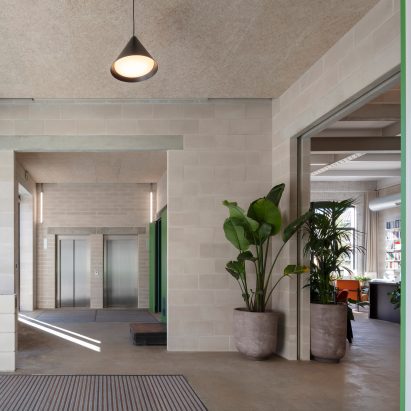
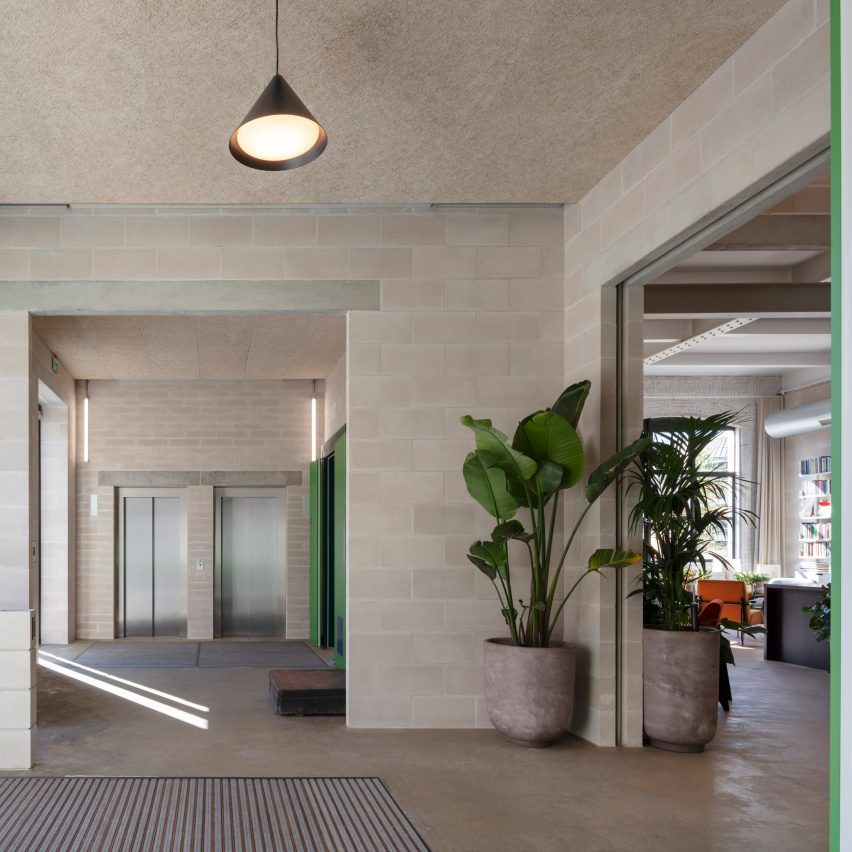
The colours and craft techniques of the Bauhaus movement were the inspiration behind Laszlo, a century-old warehouse building transformed into workspaces by London studio Henley Halebrown.
Located in north London, the renovated building now contains five floors of flexible offices, ranging from 482 square metres up to 647 square metres.
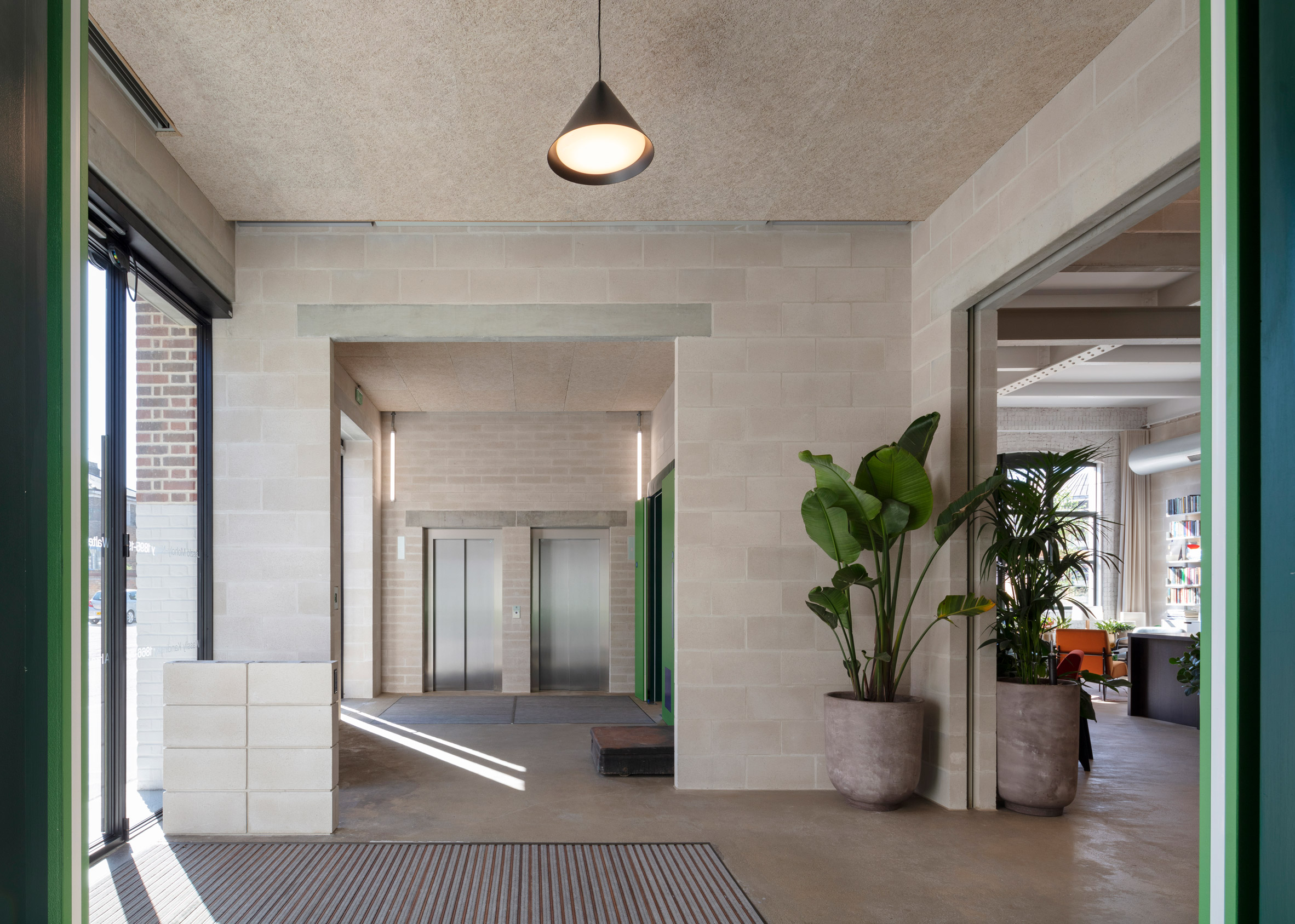 Structural elements are left exposed through Laszlo's interiors
Structural elements are left exposed through Laszlo's interiors
Henley Halebrown approached the project differently to a standard office conversion.
Instead of a "shell and core" approach, where tenants have no choice but to complete a fit-out, the architects have made spaces that can be occupied simply as they are.
They did this by exposing the building's internal structure – its concrete floor slabs and steel I beams – and bringing order to the elements around. Services are neatly organised, while low-tech materials like concrete and timber are used to make adjustments.
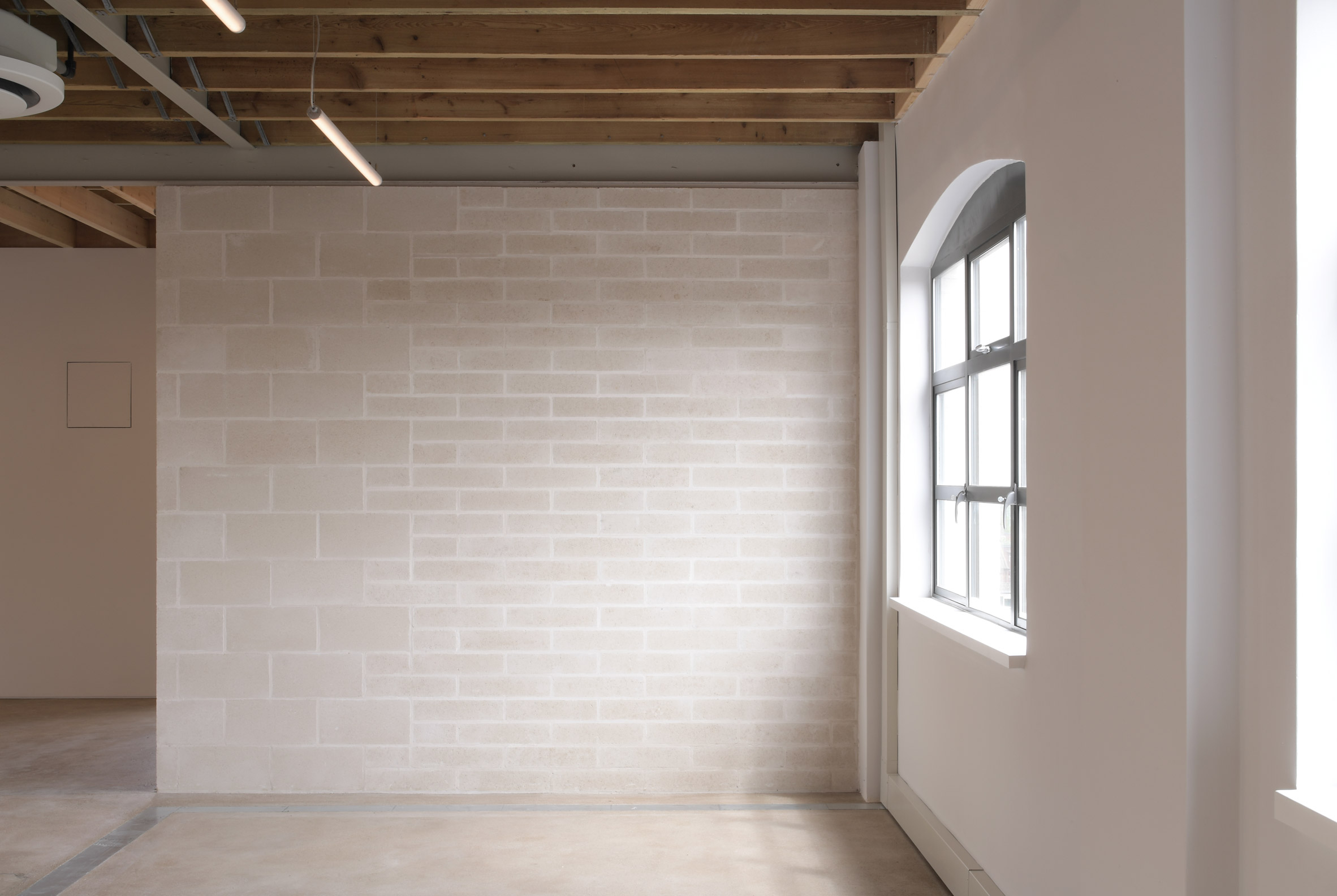 Offices are designed to require minimal additional fit-out
Offices are designed to require minimal additional fit-out
Studio founders Simon Henley and Gavin Hale-Brown describe the approach as seeking "to illustrate how elementary the construction of an office might be".
The idea is that companies would only need to add their own branding, plus furniture, which would significantly reduce the amount of waste generated when tenants move out.
[ 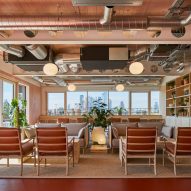
Read:
Waugh Thistleton Architects creates fully demountable office block next door to Dezeen
](https://www.dezeen.com/2020/07/08/waugh-thistleton-architects-demountable-clt-6-orsman-road/)
"Working on adaptive reuse buildings like Laszlo is second nature to us as a practice," said Henley.
"It builds on our interest in how you create new layers of life within a city while celebrating both its past and future, and of course, the great thing is that the huge environmental benefits that come through reuse are now more widely understood."
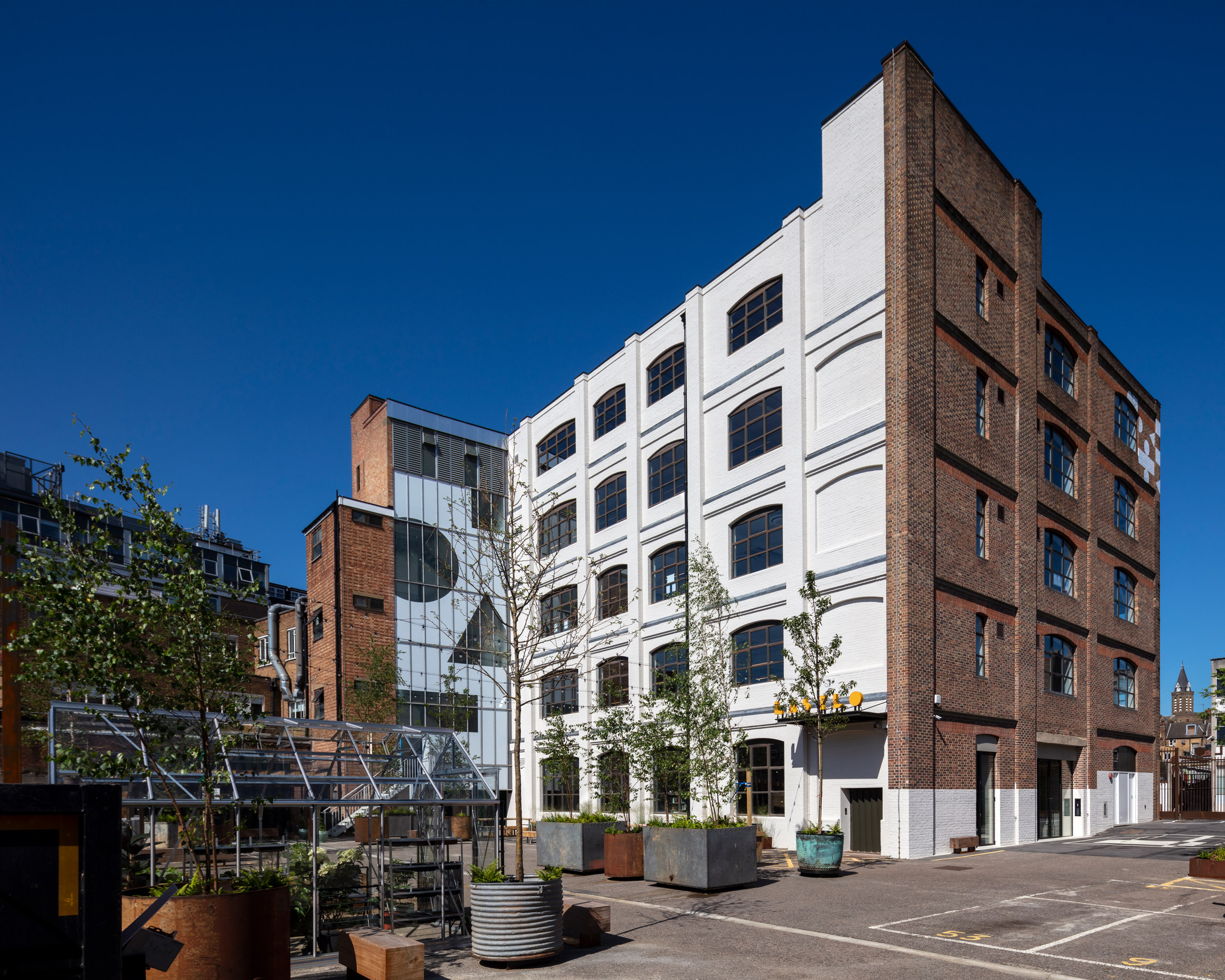 Geometric graphics signal the building's change of use
Geometric graphics signal the building's change of use
Originally known as Batavia Mills, Laszlo was built in the early 20th century as a facility for manufacturing and printing, although it also served as storage for gas masks during the second world war.
The Bauhaus become an obvious point of reference for the renovation; not only does it date from the same period, but its core ethos was about being true to materials and finding beauty in craft.
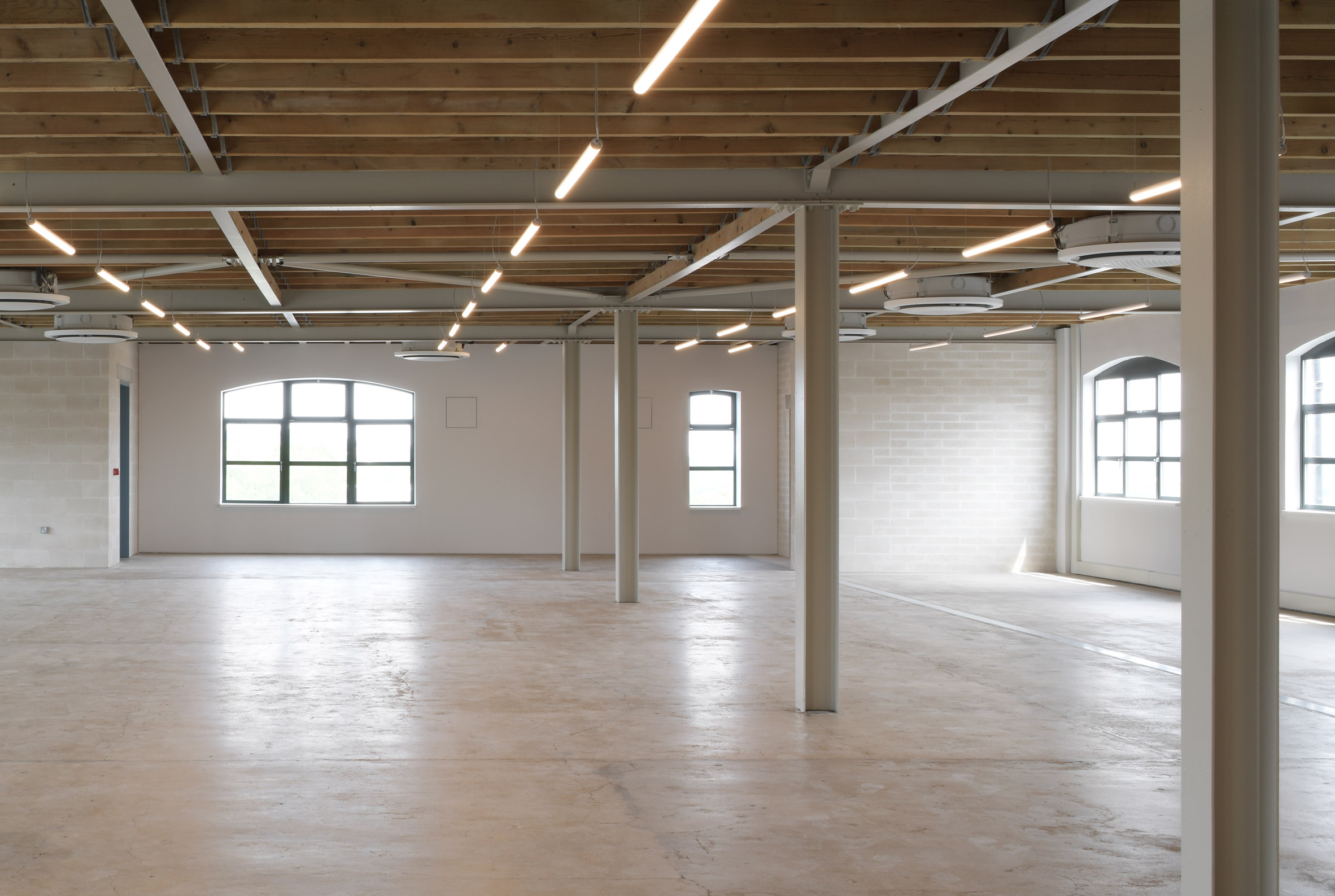 A steel and timber joisted roof is now exposed on the fourth floor
A steel and timber joisted roof is now exposed on the fourth floor
A painting by Bauhaus artist Laszlo Moholy Nagy – who the building is named after – provided the cues for repairs made to the concrete floors.
There were various gaps created where partition walls had been removed. Instead of infilling these with concrete, Henley Halebrown chose an earth-coloured screed that highlights these marks as traces of history.
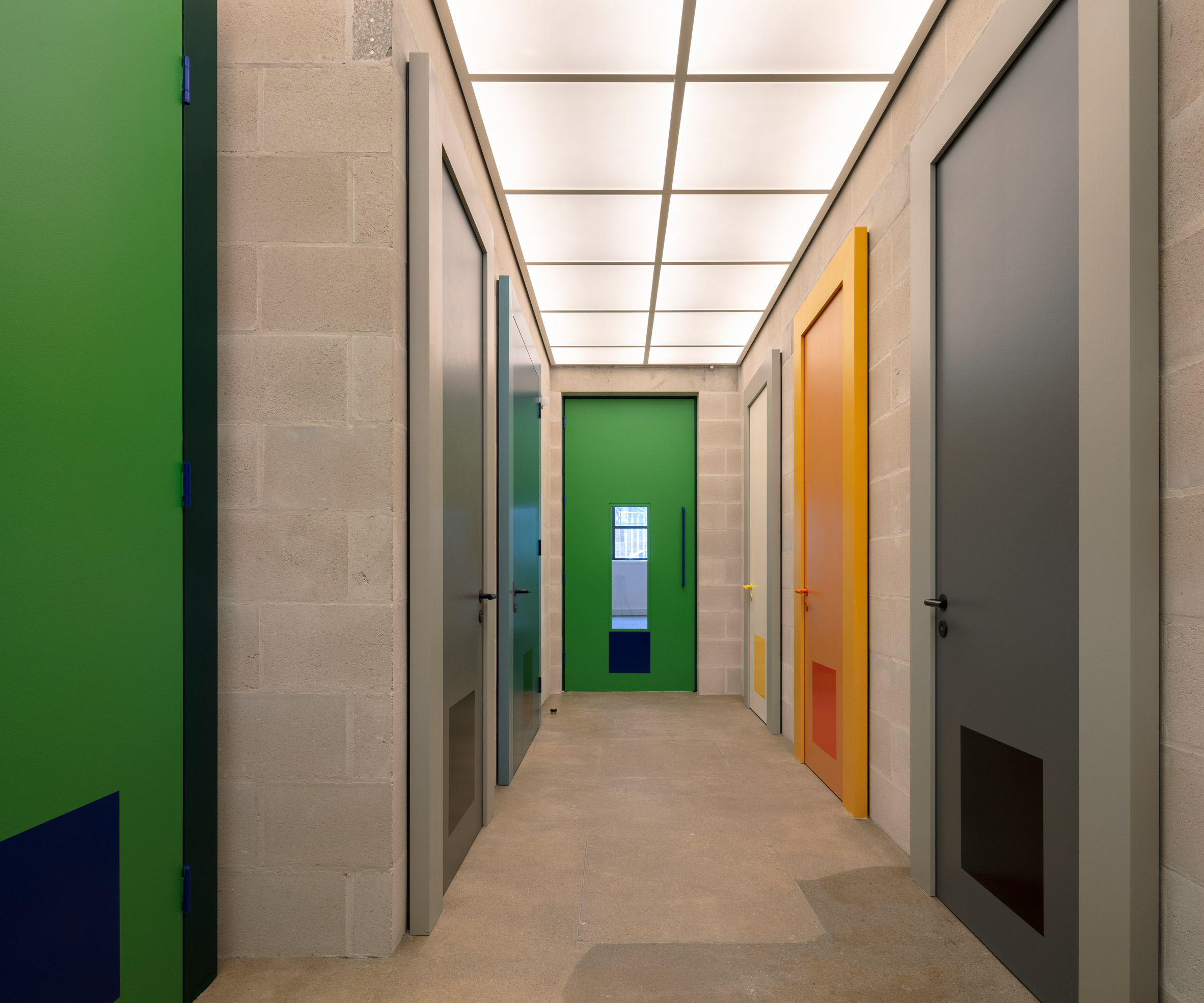 Doors throughout the interior borrow tones from Josef Albers' colour studies
Doors throughout the interior borrow tones from Josef Albers' colour studies
The building refers to the colour studies of Bauhaus teacher Josef Albers with a series of doors painted in bold but complementary shades of green, yellow, grey and blue.
Another Bauhaus reference can be found on the exterior, where the brickwork and glazing have been subtly decorated with the same graphic shapes and lettering that give the building its brand identity.
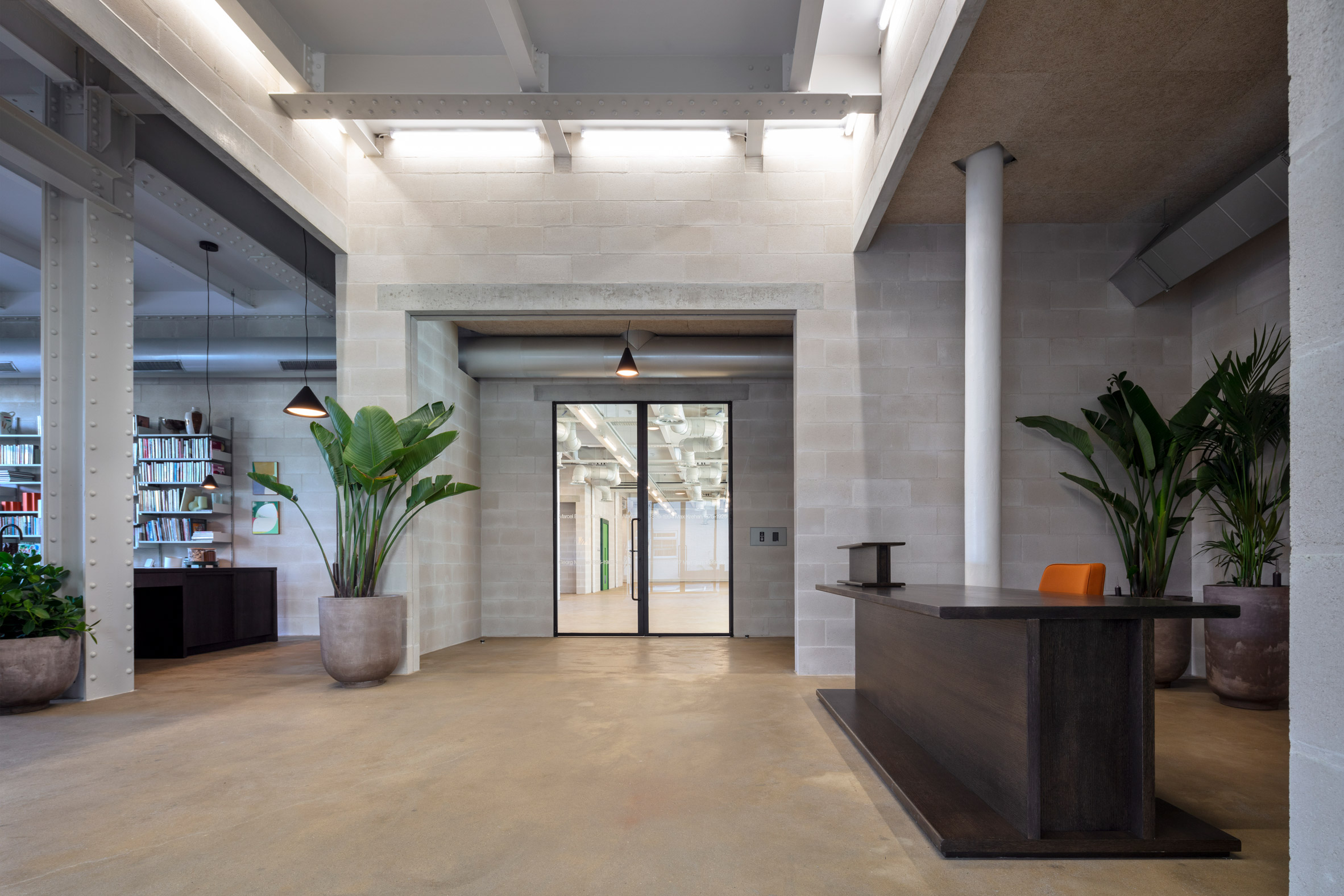 The reception features a desk shaped like an I beam
The reception features a desk shaped like an I beam
Laszlo offers various amenities to its tenants, including a large outdoor seating area, bicycle parking and showers. There are also shared spaces on the ground floor, including a reception and an area known as the living room.
Furniture in these ground floor spaces is designed to feel like part of the structure, with highlights including a reception desk and bookshelf that both look like giant I beams.
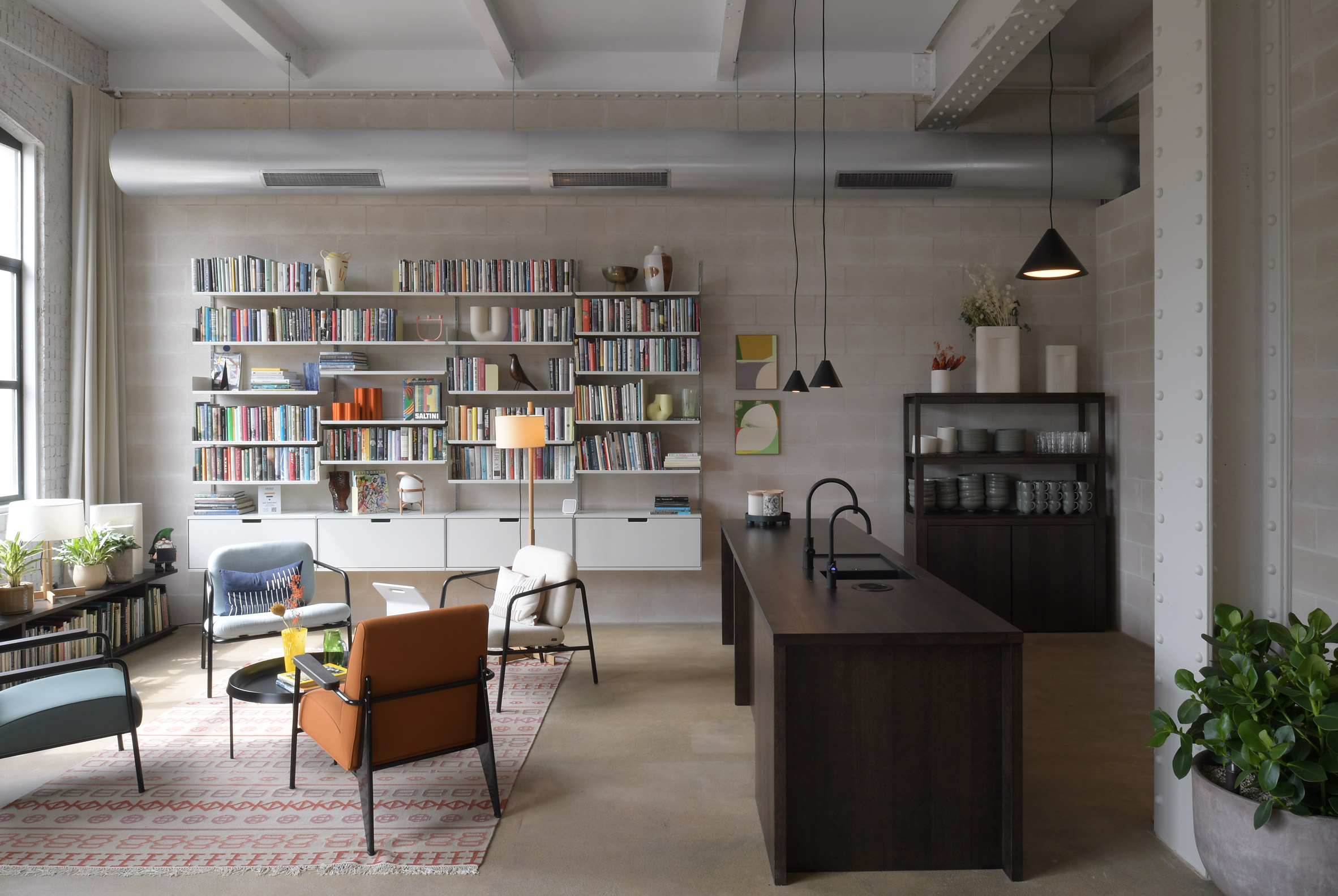 A living room with kitchen is shared by all tenants
A living room with kitchen is shared by all tenants
"Within the framework of the original structure, we composed a series of unconventional spaces with conventional building materials, mostly blockwork, lintels and paint," said Jack Hawthorne, an associate at Henley Halebrown.
"These spaces are occupied with pieces of furniture that are imagined and made as oversized elements of structure, 'furniture as structure', placing them in playful dialogue with the building's newly exposed frame."
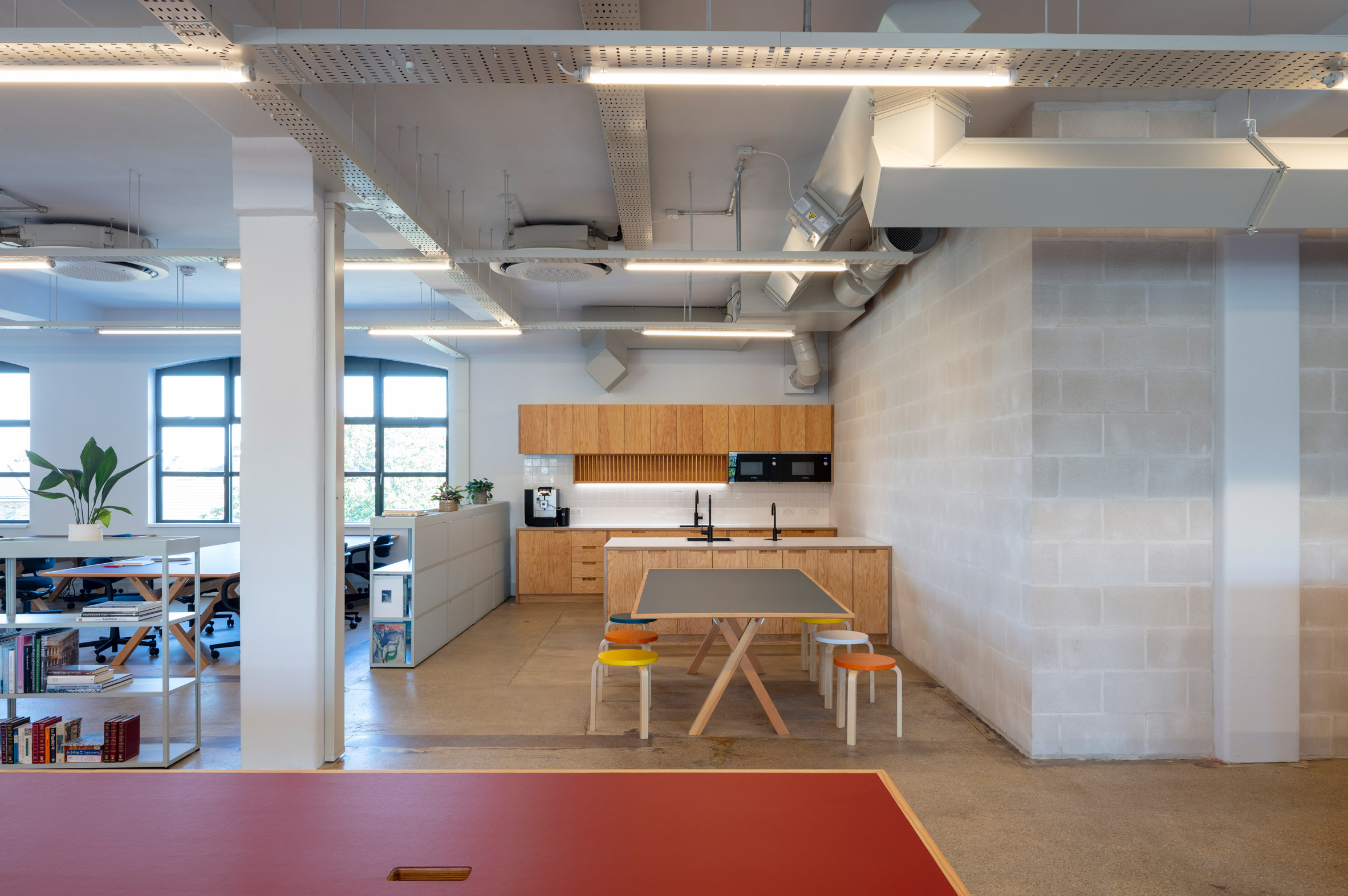 One of the office floors has already been furnished
One of the office floors has already been furnished
Photos of the project show one of the office floors already fitted out.
The light-touch approach includes glazed meeting rooms, a wooden kitchen and mobile shelves that function as room dividers. Desks and seats integrate bold flashes of colour that feel at home with the rest of the building.
Each floor is similar in layout and finish, although the fourth floor features an exposed steel and timber joisted roof and a balcony terrace.
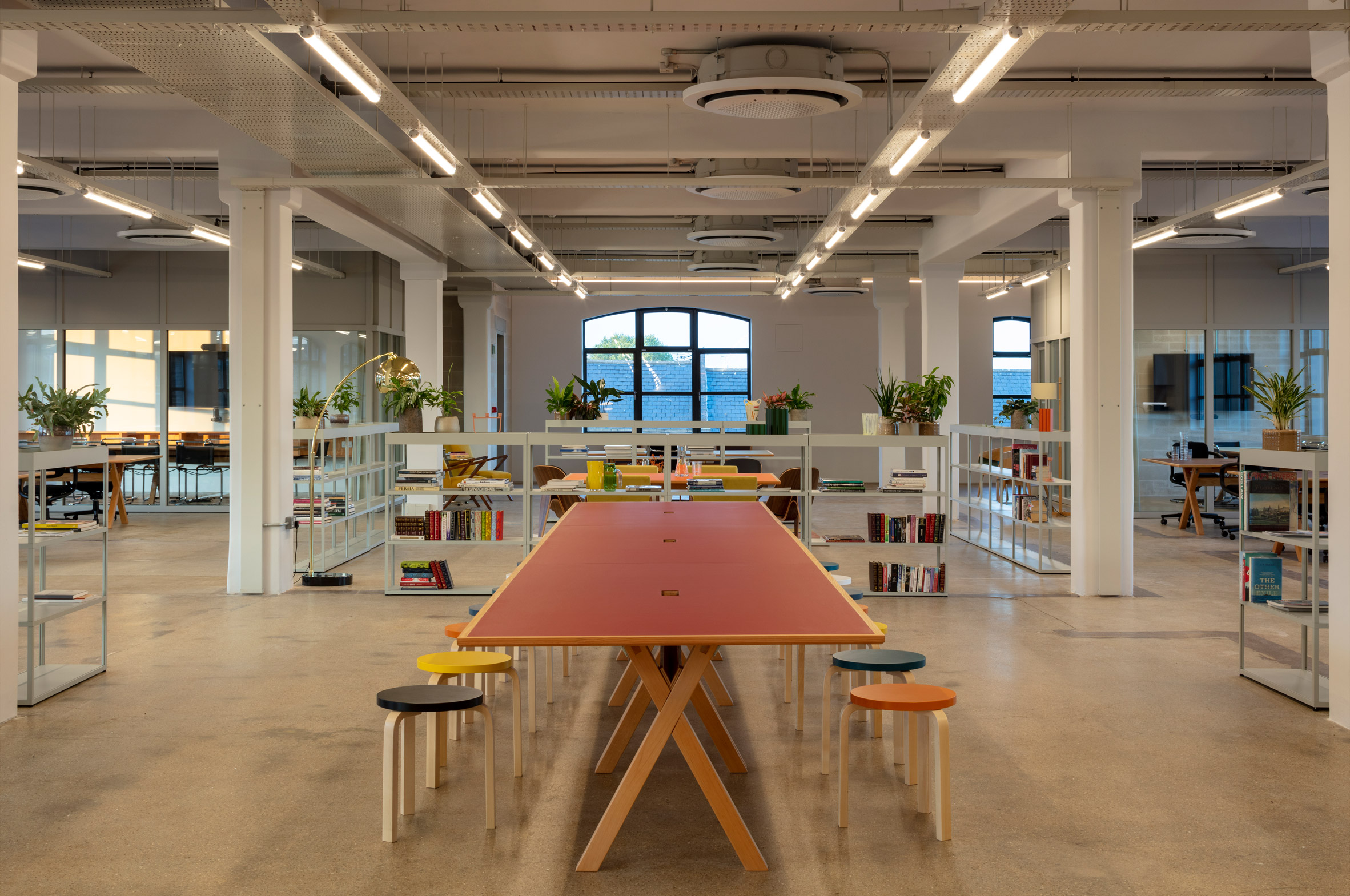 The space features colourful desks, open shelves and glazed meeting rooms
The space features colourful desks, open shelves and glazed meeting rooms
Laszlo is one of several innovative offices designs recently completed in London, as companies adapt to more flexible working policies following the impact of the pandemic.
Other recent examples include a co-working office that doubles as a "town hall" and an office with more meeting areas than desks.
The photography is by David Grandorge.
The post Henley Halebrown creates Bauhaus-inspired offices in converted London warehouse appeared first on Dezeen.
#all #interiors #london #uk #bauhaus #england #officeinteriors #henleyhalebrown #offices

There are no comments yet.